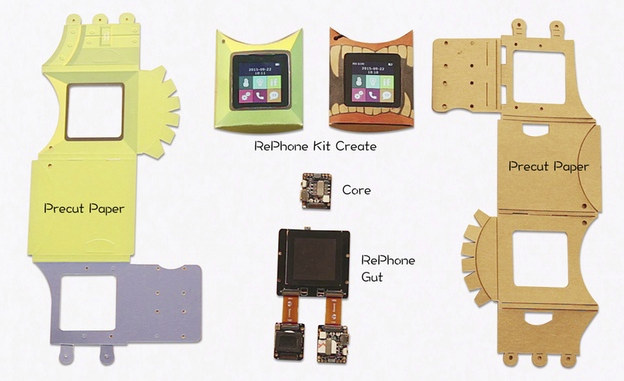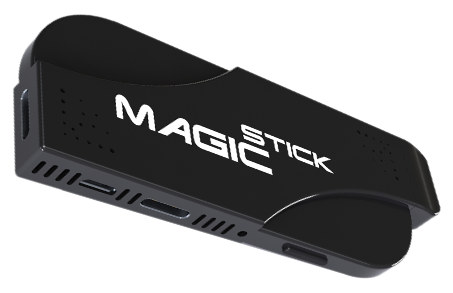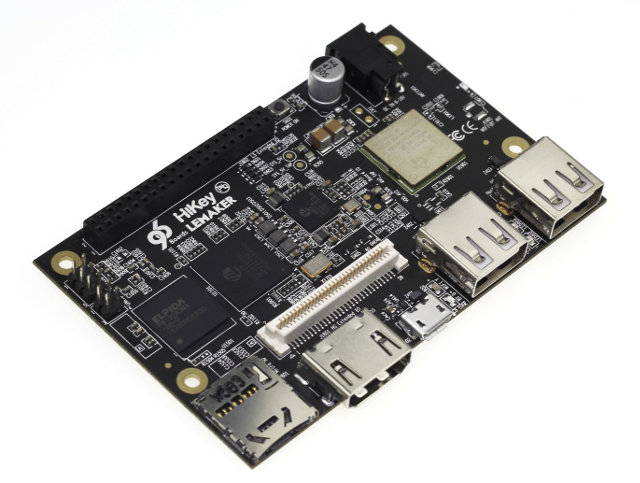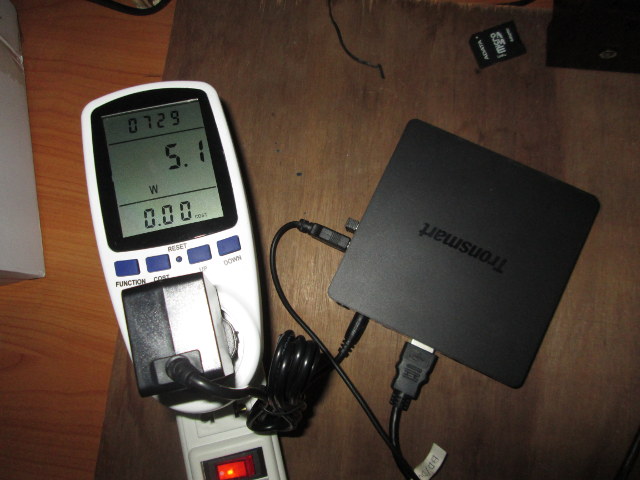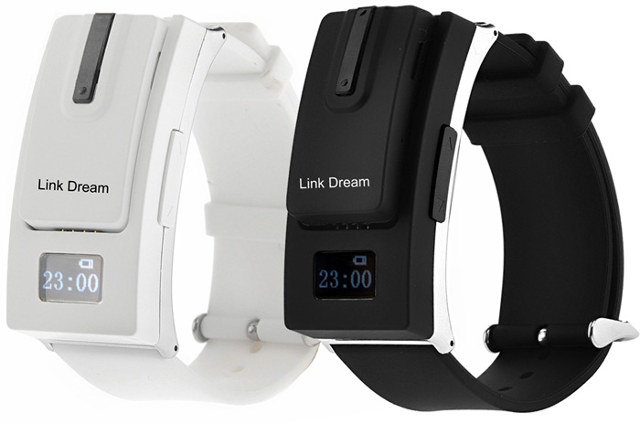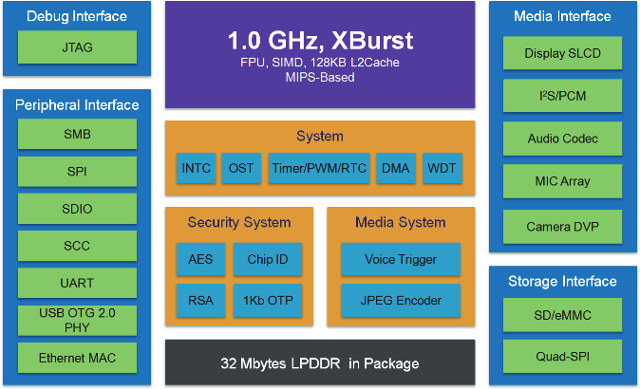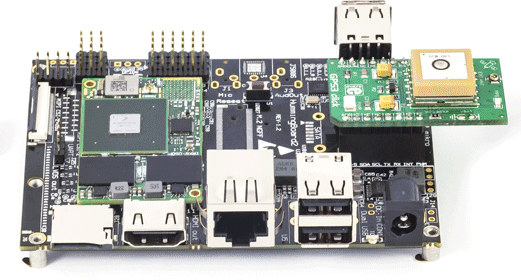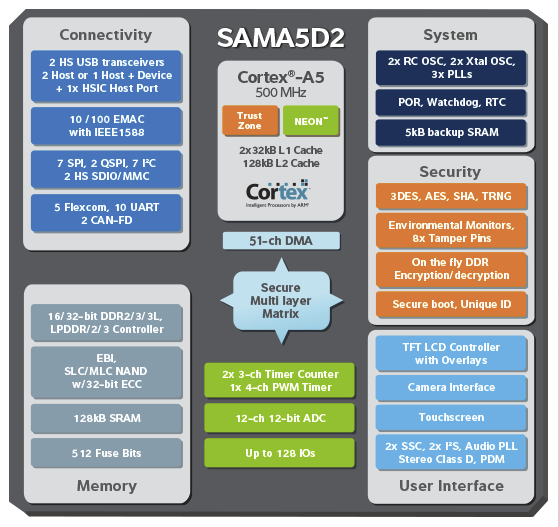Seeed Studio has design a modular and open source phone it calls RePhone Kit Create. The kit allows you, or/and your kid(s), to assemble their own phone based on building blocks including a 2G or 3G core module, a touchscreen display module, an audio module, and pre-cut, seawable, washable, and easily drawable Kraft paper to make the case. The kit can also be used for IoT applications using cellular and Bluetooth connectivity, and extra Xadow modules GPS, NFC, motion sensors, camera and more.. Two cellular “core” module can be used: RePhone GSM + BLE module with the “world’s smallest System-on-Chip (SOC) for Wearables and Internet Of Things”, GSM, GPRS and Bluetooth 2.1 and 4.0 support. RePhone Core Module 3G with a “powerful microcontroller”,a standard Xadow interface (USB, GPIO, I2C, SPI, UART, EINT), support for speaker, two microphones and a headset, a Nano SIM, and support for HSPA/WCDMA:850/1900 and GPRS/EDGE:850/1900. Voltage: […]
MagicStick TV Sticks Powered by Intel Atom x5 or x7 Processors Feature up to 8GB RAM, HDMI 2.0, 802.11ac… (Crowdfunding)
Several Cherry Trail Atom x5 MegooPad TV sticks are on the way, but they mostly have similar specs to the previous generation Bay Trail sticks, except with a slightly faster processor, and in some models, USB 3.0 support. An Indian company is currently developing some Cherry Trail TV sticks with impressive specifications including processors such as Intel Atom x7-Z8700, up to 8GB RAM, up to 64GB storage, 802.11ac connections, HDMI 2.0, and USB 3.1 type-C connector. These products are called MagicSticks, and three models will soon be available. [Update 30/9/2015: The indiegogo campaign is up, but the Wave is not shown, and instead MagicStick Power has been renamed to Wave, changes are reflected in the table below] MagicStick One MagicStick Wave MagicStick Power Wave Processor Intel Atom x5-Z8300 processor up to 1.83 GHz, with 12 core Gen8 GPU Intel Atom x5-Z8500 processor up to 2.24 GHz, with 12 core Gen8 […]
LeMaker Hikey 96Boards Development Board Comes with 1 to 2GB RAM, Sells for $75 and Up
Hikey was the first 64-bit ARM development board compliant with 96Boards specifications, and supported by Linaro. Availability always seemed to be an issue however, and pricing was set to $129. But Lemaker, the makers of Banana Pi boards, recently joined Linaro, and they’ve built a lower cost version of the Hikey board, still featuring Hisilicon Kirin 620 octa-core ARM Cortex-A53 processor, but with 1GB and 2GB RAM versions, priced respectively at $75 and $99. LeMaker Hikey board specifications: SoC – HiSilicon Kirin 620 octa core Cortex A53 processor @ 1.2 GHz with ARM Mali-450MP4 GPU System Memory – 1 or 2 GB LPDDR3 @ 800 MHz Storage – 8GB eMMC + micro SD slot Video Output / Display – HDMI up to 1080p, MIPI-DSI interface Connectivity – 802.11 a/b/g/n Wi-Fi, Bluetooth 4.1 LE (WL1835MOD module) USB – 2x USB 2.0 host ports, 1x micro USB OTG Camera – MIPI CSI […]
A Look at Android and Windows Mini PCs’ Power Consumption in Power Off, Standby, Idle, and Video Playback Modes
I’ve previously measured power consumption of Amlogic S812 and Rockchip RK3288 based TV boxes using a multimeter. This provides relatively accurate measurements, as well as neat power consumption profiles of devices, but it’s a little complex and time-consuming, so it’s not something I would do for all devices. The easiest way to measure power consumption is to use a kill-a-watt type of device, but my first one broke after only 3 months last year. I purchased a new one recently, so I run run some power measurement tests on several devices. I selected five devices for this test: MeLE PCG01 HDMI stick with Intel Atom Z3735F processor running Windows 10 Zidoo X9 TV box with Mstar MSO9810 running Android 4.4 Open Hour Chameleon TV box with Rockchip RK3288 processor running Android 4.4 Tronsmart Orion R68 Meta TV box with Rockchip RK3368 processor running Android 5.1 Tronfy MXIV TV box with […]
Link Dream i-Watch BT is a Both a Bluetooth Headset and a Watch
If you don’t like wearing your Bluetooth headset all the time, but also find it inconvenient to take it out of your pocket and/or bag once you do get call, Link Dream i-Watch BT might offer a solution. It’s a basic watch that carries a Bluetooth 3.0 headset, so you can easily use it as needed. Key features and specifications: Connectivity – Bluetooth V3.0 (CSR) with Headset, HFP, and A2DP profiles. Range: Up to 10 meters Display – Shows time and battery level Audio – Microphone USB – (micro?) USB port for charging Misc – Vibrator, LED, multi-function button, and time adjustment button Battery 180mAh Li-ion battery Talking time: Up to 1.5 – 2 hours; Standby time: Up to 200 hours (or 6 to 10 days depending where you read) Charging time: About 2 hours Charger – 5V @ 300 – 500mA Dimensions – 25.5 x 2.8 x 1.8 cm […]
Ingenic X1000 MIPS Processor and X1000 Phoenix Board Target IoT and Embedded Applications
Ingenic is a Chinese SoC vendor that makes processors featuring their X-Burst cores based on MIPS architecture. Their JZ47 series can be found in tablets and development boards such a MIPS Creator CI20, while their M series, including Ingenic M200, are dedicated to wearables & IoT applications. The company has now launched X series starting with X1000 processor which include an audio codec, a Voice Trigger Engine (VTE) and 32MB RAM in package. Ingenic X1000 features: CPU Core – Ingenic MIPS XBurst 32-bit core up to 1.0 GHz, Double precision hardware float point unit, L1 cache 16KB/16KB, and L2 cache 128KB Security Core – On-chip security ROM and RAM, hardware AES and RSA, supports security boot and user customization Memory 32MB LPDDR in package Support 16-bit DDR2, DDR3 and LPDDR up to 512MB Support Quad-SPI NOR/NAND, eMMC, SDHC Display – 8-bit, 9-bit, 16-bit parallel interface SLCD up to 640×480@60Hz, 24 […]
HummingBoard Gate Boards Add a mikroBUS Socket to Support MikroElektronika Click Boards
SolidRun already released HummingBoard-Base, HummingBoard-Pro, and HummingBoard Edge previously, but the company has now launched another version of their Freescale i.MX6 based boards with HummingBoard Gate that adds a mikroBUS socket to support over 150 add-on boards – called Click Boards – made by MikroElektronika. HummingBoard Gate specifications: SoC – Freescale i.MX6 Solo, Dual Lite, Dual, or Quad with Cortex-A9 cores @ 1 to 1.2 GHz System Memory – Up to 4GB DDR3 Storage – Micro SD slot Connectivity – Gigabit Ethernet (limited to 470Mbps), optional WiFi/Bt module Video Output – HDMI output, MIPI-DSI connector Camera – MIPI CSI-4, parallel camera USB – 4x USB 2.0 ports Expansion mPCIe slot with SIM card holder 36-pin GPIO header mikroBUS click interface Misc – Reset button, RTC with battery Power – 7-36V, 5.5mm jack Dimensions – 102 x 69 mm As usual, the board is comprised of a baseboard and a microSOM, […]
Atmel Introduces SAMA5D2 Cortex A5 SoC with Extended Temperature Range, Lower Power Consumption
Today, the news broke out that Atmel will be bought by Dialog Semiconductor for about $4.6 billion. The Anglo-German company is little known as their main products are PMIC, audio and connectivity chips, but they’ve still managed to get the financing to purchase Atmel. But that’s not the purpose of the post today, and instead I’ll cover a new SAMA5 Cortex A5 SoC recently announced by the company, targeting industrial Internet of Things, wearables and point of sale applications. SAMA5D2 key features and benefits: ARM Cortex-A5 core running at 500MHz (785DMIPS). Floating point unit (FPU) for high-precision computing and accelerated data processing. 128KB of L2 cache for system performance Low power consumption Less than 150mW in active mode at 500MHz with all peripherals activated Less than 0.5mW in low power mode with SRAM and registers retention Sub 200µA in retention mode with context preserved New backup mode with DDR in […]


